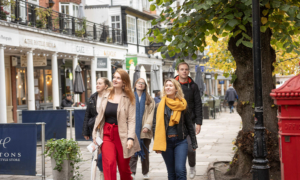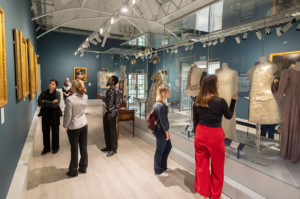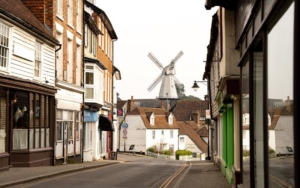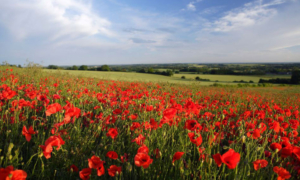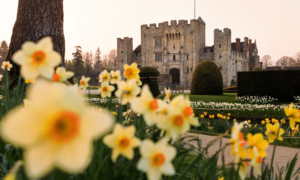One of the most famous places in Royal Tunbridge Wells, the Pantiles is a historic Georgian colonnaded walkway. Home to over 70 cafes, bars, restaurants and shops, it’s one of the most-visited places in the town. It’s also where you’ll find the Chalybeate Spring, the iconic spring discovered in 1606 that put the town on the map.
The Pantiles Then and Now

The chance discovery in 1606 of a Spring with distinctive reddish tinted mineral deposits led to the development of the Pantiles and later on, Royal Tunbridge Wells.
The practice of drinking from natural springs for health reasons dates back to Roman times.
During the reign of Elizabeth I, the practice of taking these natural waters for health purposes became more popular among the nobility.
The royal and noble parties would leave the Court and travel to the established Spa towns of Bath and Buxton pursuing curative well-being.
Away from Court they took advantage of the opportunities provided to establish relationships with individuals from different social backgrounds to exchange ideas and opinions. Free from the restrictions of Court the concept of a holiday as we know it today was started.
The Pantiles Today
Today, the Pantiles remains one of the most-visited parts of Royal Tunbridge Wells. The walkway is lined with cafes, bars and restaurants while the Lower Walk is home to some of the best boutique shops. Live music events run throughout summer when the iconic bandstand comes to life with a mix of music genres from jazz to Bollywood, country and western to folk.
And with regular markets, food festivals, vintage fairs and more, there’s always something to do on the Pantiles.
What’s more, those looking to delve into the history of The Pantiles can head on one of our Guided History Tours.

Pleasure, Leisure and Scandal at the Spa in Tunbridge Wells.
After the Civil War and the restoration of the monarchy, King Charles II and his Queen, Catherine of Braganza, came to Tunbridge Wells.
The presence of the Court attracted other visitors who were primarily focused on the pursuit of pleasure rather than necessary medical activities.
The demand for entertainment and social amenities, together with the breakdown of rigid social barriers lead to a less formal atmosphere. It was at this time the Wells acquired its reputation as “les eaux de scandale”.
In 1698, Princess Anne, who was a frequent visitor to the Wells gave £100 to have the Upper Walk paved after her son, the Duke of Gloucester, slipped and fell whilst playing. When she returned the following year nothing had been done and she left never to return.
Eventually the Walks were paved with Pantiles which were clay tiles baked in a pan. You can see examples of these at the Amelia Scott.
Next in this timeline, we introduce Richard ‘Beau’ Nash who came onto the Spa scene. He was an 18th century fashion icon and famous celebrity of the time. In 1735, Beau Nash established himself as Master of Ceremonies during ‘the season’. He did this by establishing the social protocol thus: the ‘Upper Walks’ for the gentry only, the ‘Lower Walks’ for everyone else.
The day would start by drinking the waters, this was followed by breakfast and attendance at Chapel. The rest of the morning was taken up by such activities as walking or riding in the surrounding countryside. After dinner, visitors were seen promenading on the Pantiles in formal dress before attending the Balls and Gaming held in the Assembly Rooms. There is a red plaque on 40-46 The Pantiles (part of the Heritage Walking Tour) to celebrate Beau Nash’s contribution to the history of the Pantiles.
The Pantiles Today
The elegant covered and colonnaded walkway has become the most well known and photographed vista of the town.
Not only that, the Pantiles, with its many buildings dating from the 18th and 19th centuries, is a very attractive and stylish part of Royal Tunbridge Wells.
It is home to a pleasing variety of specialist independent shops, art galleries and open-air cafés, restaurants and bars.
An entertaining and varied programme of regular events, including a summer Jazz Festival on Thursday evenings, a Food Festival and a fortnightly Farmers’ and Craft Market, are all held on the Pantiles.
The natural Chalybeate Spring is still situated at the northern end of the Pantiles. You can learn more about the history of the town at the Amelia Scott, museum and gallery.
Getting Around
It takes 20 minutes to walk from one end of the town centre to the other. There are a number of buses to catch take you up (and down) the hill to other parts of the town and to Rusthall. The 281 Arriva bus (green) is one and it is possible to purchase an all day ticket that for Tunbridge Wells.









